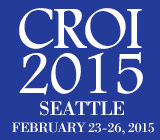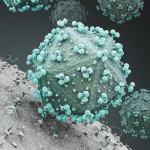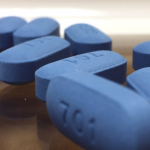 The use of Truvada (tenofovir/emtricitabine) as pre-exposure prophylaxis (PrEP) among gay and bisexual men has entered a new, particularly exciting phase. Gone is the silence surrounding this daily-pill HIV prevention method, whose July 2012 approval inspired barely a whisper from the press or among everyday people—that is, until over a year later. Media coverage has now largely progressed from a subsequent period of head scratching over the Great Mystery: Why is no one using PrEP? Similarly falling away are scientists’ questions as to whether widespread Truvada uptake will slow, and actually send into retreat, the expanding rates of new HIV infections among men who have sex with men (MSM). And a chorus of advocates is clamoring for efforts to target the powder-blue pills where they’ll do the most good.
The use of Truvada (tenofovir/emtricitabine) as pre-exposure prophylaxis (PrEP) among gay and bisexual men has entered a new, particularly exciting phase. Gone is the silence surrounding this daily-pill HIV prevention method, whose July 2012 approval inspired barely a whisper from the press or among everyday people—that is, until over a year later. Media coverage has now largely progressed from a subsequent period of head scratching over the Great Mystery: Why is no one using PrEP? Similarly falling away are scientists’ questions as to whether widespread Truvada uptake will slow, and actually send into retreat, the expanding rates of new HIV infections among men who have sex with men (MSM). And a chorus of advocates is clamoring for efforts to target the powder-blue pills where they’ll do the most good.
Research presented at the 2015 Conference on Retroviruses and Opportunistic Infections (CROI), which took place February 23 through 26 in Seattle, provided key insights into PrEP’s capacity to reduce HIV incidence among this population, highlighted the potential of taking PrEP only in the days surrounding a potential exposure to HIV, and revealed a dramatic upswing in Truvada use among MSM in San Francisco.
The Brits Boast Excellent Real-World PrEP Use
The biggest news to come out of CROI was that PrEP reduced the population-level risk of HIV by 86 percent among a group of HIV-negative MSM who received Truvada prescriptions through 13 health clinics in England. The overall effectiveness seen in the PROUD study blows out of the water the respective 44 percent and 50 percent success rates seen in the iPrEx trial, published in December 2010, and its open-label extension (iPrEx OLE), which posted results in July 2014.
What’s more, PROUD showed that gay men—almost all participants identified as such—could successfully use PrEP in a real-world setting.
PROUD was only meant to be a pilot study, using a relatively small number of participants to test whether the study model would justify enrolling more men. Researchers expected that a larger group was needed to provide enough data to lend sufficient statistical heft to the ultimate findings. Between November 2012 and April 2014, PROUD enrolled 545 participants at very high risk of contracting HIV. A total of 276 of them were randomly selected to receive PrEP immediately, while the others were set to start on PrEP after a one-year delay. This effectively created a control group without using a placebo.
In October 2014, after an independent committee deduced that Truvada was already proving highly effective at reducing the risk of HIV, it recommended that participants still waiting to receive PrEP should be offered Truvada immediately.
There are two main factors that allowed such a relatively small study to show statistically significant results ahead of schedule, one promising and the other less so.
First, the study participants were adhering to the daily PrEP regimen at high rates. PROUD’s chief investigator, Sheena McCormack, MSc, FRCP, a professor of clinical epidemiology at University College London, says that the men’s high-risk sexual practices likely played a role in spurring them to adhere. A year into the study, those receiving PrEP reported having condomless receptive intercourse with a median three partners during the previous three months. Fifty-seven percent of those in the immediate PrEP arm contracted at least one sexually transmitted infection during the study.
“So they certainly knew as a group that they were at an increased risk of HIV,” says McCormack, “and I guess that’s why they were so good at taking their tablets and why it worked so well.”
Importantly, participants’ overall reported condom use did not change at the one-year mark from the level of recent use they reported at the beginning of the study, regardless of whether they took PrEP. This means that the study showed no evidence of what’s known as “risk compensation”—taking greater sexual risks while on PrEP.
Neither phase of iPrEx detected risk compensation, although anecdotal reports suggest that some MSM may be exploring riskier sex after starting Truvada.
IPrEx head researcher Robert M. Grant, MD, MPH, a professor of medicine at the University of California, San Francisco, says that there is certainly a strong link between lower rates of condom use and PrEP uptake among American MSM; but this largely exists because men who use condoms less frequently are more inclined to start Truvada in the first place. And while Grant says, “there’s no doubt that there are some people who choose to stop using condoms after they start PrEP,” he believes they amount to a distinct minority.
The second factor influencing PROUD’s ability to come up with statistically significant results so fast is that the men in the deferred-PrEP arm of the study were contracting HIV at a rate three times greater than the study authors’ prediction. (Indeed, this fact only underscores how much of an effect widespread PrEP use could have in a similarly high-risk population.) The deferred group saw 19 new cases of HIV, meaning that 8.9 percent of them were becoming HIV positive per year. Meanwhile, only three of those who received PrEP immediately contracted the virus, for a HIV incidence rate of just 1.3 percent per year. Looking at those three individuals, the researchers believe one contracted HIV just before starting in the study, and two others likely weren’t taking PrEP when they became infected. On the whole, PrEP reduced the risk of HIV by 86 percent, with an estimate range of 58 percent to 96 percent; but for those who actually stuck with Truvada, the protection was apparently perfect.
Calling the PROUD results “amazing” and “remarkable,” Grant says they “really show that gay men and bisexual men, when motivated and when given clear information about how well PrEP works, can take it and they can use it very effectively.” He added that the findings were “entirely consistent” with the iPrEX OLE estimate that for those taking four or more pills per week, PrEP was 100 percent effective.
Intercourse-Based PrEP Dosing Works—But Why?
Additional research presented at CROI introduced another way of taking PrEP besides the standard daily dosing schedule. In the IPERGAY trial, MSM were instructed to take Truvada only in the days surrounding a potential exposure to HIV. Despite the rather convoluted set of dosing instructions participants received, the study reached the same level of protection as PROUD, 86 percent.
However, the authors of this ongoing study were unable to determine whether the specifics of the intercourse-based dosing schedule were fully responsible for this dramatic reduction in risk, or if the participants were largely protected because, at least on average, they were taking Truvada with some regularity. So whether such a protocol would prove effective among people who have sex less frequently remains unknown.
Begun in 2012, IPGERGAY enrolled 414 high-risk MSM in six sites in France and one in Canada and randomly assigned them to receive Truvada or a placebo. The men were instructed to take a double dose 24 to two hours before a potential sexual exposure to HIV (or one dose if the most recent pill was taken one to six days before). And then, if they did have intercourse, they were to take one dose every 24 hours after they first took Truvada until they had taken two pills since the last time they had anal sex.
As with PROUD, an early analysis showed that Truvada was clearly effective, so in October 2014 the study’s independent monitoring group recommended that all participants receiving the placebo should be offered PrEP.
After an average follow-up of 13 months, 14 of those taking the placebo contracted HIV, for an incidence of 6.6 percent a year. Just two men in the Truvada group became HIV positive, for a yearly incidence of 0.94 percent. The 86 percent effectiveness rate of intercourse-based PrEP sits within an estimate range of 39.4 to 98.5 percent.
Also similar to PROUD, the only participants who contracted HIV in the Truvada arm were apparently not taking Truvada for some time beforehand. So it would appear that this intercourse-based approach toward taking PrEP may provide perfect protection.
Or it least it did provide excellent protection for this rather small group of men who had relatively active sex lives with multiple partners. The reason why the men in IPERGAY’s Truvada group were so well protected could be that they were taking a median 16 pills each month (meaning three or four pills per week), with the 25th to the 75th percentiles of PrEP use spanning 12 to 24 pills per month. By comparison, in the iPrEx OLE paper Grant’s team estimated that taking Truvada two to three times a week reduced the risk of HIV by 81 percent. A similar effect may be protecting the men at high rates in IPERGAY, making the actual details of the dosing schedule less important to the study’s success. If the men had been instructed to take PrEP every other day regardless of the scheduling of their sex lives, perhaps they might have been just as protected. On the other hand, the appeal of the intercourse-based dosing protocol may factor into its great success among this population; perhaps these men and others like them would not do as good of a job following a daily or every-other-day schedule.
So how well might intercourse-based dosing work among men who both use it less frequently and have fewer potential exposures to HIV? Let’s say someone, we’ll call him Louis, starts with no Truvada in his system and then follows the intercourse-based dosing protocol properly because he engages in receptive anal sex with an HIV-positive partner who has a detectable viral load. A week passes after Louis’s last PrEP dose (meaning he’s having sex every nine days), which allows the Truvada to drop to negligible levels; then he follows the dosing protocol once more for a similar sexual encounter. (Recent research suggests that it takes about a week for Truvada levels to dissipate completely among those taking daily dosing. Louis’s drug level, however, may not rise as high as it would with daily dosing, so fewer than seven days may be required to largely eliminate the drug from his body.) Louis has no other HIV risk factors than these intermittent encounters for which he is consistently using the IPERGAY dosing protocol.
Now, let’s say a large group of men follow Louis’s behavior pattern for an extended period of time. Considering this more widely spaced use of the dosing strategy, will there be high enough levels of Truvada in their rectal tissues at the time of exposure to HIV, and will the drug levels remain high enough for long enough afterward to keep all of these men from contracting the virus? Or perhaps will they be protected, but at a lower rate—meaning some will contract the virus—than if they had sex more frequently and thus allowed just a few days to pass between any one dose of Truvada?
“It is difficult to answer this question,” the study’s coordinator, Jean-Michel Molina, MD, chief of the department of infectious diseases at Paris’s Hôpital Saint-Louis, says of the conundrum over intercourse-based dosing’s potential for success among less infrequent users. “The data we have suggest that there would still be some protection, although we don’t know if the protection would be as high as with people having sex once a week.”
Taking a closer look at the pill-taking patterns in IPERGAY shows that there was a great deal of variation in how often individual participants were using PrEP. Monthly counts of how many pills were left over among a subset of the study population showed that any one person might go from taking 20 or more pills during one month to taking only five pills in another. So PrEP could have succeeded in protecting some of these men from exposure to HIV during some of those periods of reduced Truvada use.
Grant says he’s not ready to recommend the IPERGAY protocol to his own patients. Even though the IPERGAY protocol did work for the men in this study, from his perspective, daily dosing is most effective, easiest to remember, and provides the most “forgiveness”: If people miss a dose or two, they’re likely still protected. He believes that, if the initial drug levels are nil, a double dose will shoot them high enough for some, but not total, protection. He recommends MSM take PrEP daily for a week to get the protection factor as high as possible, and to continue daily dosing for periods when they are having potential exposures to the virus.
Keen to emphasize that MSM tend to go in and out of “seasons of risk,” Grant says, “And then, if you get to a place where you’re not longer at risk for HIV, the question becomes: How many doses do you have to take once you get to that point?” (Recognizing you are at that point is another matter, he’s also eager to point out.) “Twenty-eight days after the last exposure is certainly enough, and is probably more than what is needed. Maybe two to seven doses after is fine. I’m not sure exactly which is right.”
Speaking about how well the IPERGAY dosing strategy may work in the real world, Molina says, “We should not try to fool people that this will provide 100 percent protection. But at least it will reduce your risk. It’s an option for people—for those who are not willing or able to take a daily regimen.”
After all, referring to the iPrEx trials, he says, “We’ve seen in a daily PrEP regimen that the regimen failed in a number of people because they were not able to take it.”
The Great San Francisco PrEP Rush
Periodically, Gilead Sciences, which manufactures Truvada, releases data on the drug’s nationwide use as PrEP. These figures are culled from only 55 percent of U.S. pharmacies, and do not account for prescriptions received through Medicaid or for people who are on PrEP as part of a study. Moreover, considering the rapid increase in new PrEP users, the estimates are already many critical months out of date as soon as they are released. And yet, media outlets and HIV advocates alike frequently point to the Gilead data as reliable yardstick for PrEP uptake in the United States.
Gilead’s most recent estimate, released in November 2014, identified just 3,253 Americans as having started PrEP through March of that year. Meanwhile, recent reporting from UCSF casts major doubt on that number. As UCSF’s Grant presented at CROI, recent data from the Centers for Disease Control and Prevention’s (CDC) National HIV Behavior Surveillance study indicated that an estimated 5,000 people in San Francisco alone received PrEP prescriptions in the past 12 months. Given that about 20 percent of people will stop taking PrEP in a given year, Grant estimates that this translates to about 4,000 ongoing users. Encouragingly, the CDC data and two other San Francisco surveys indicate that local MSM who are on PrEP or have tried it were already at high risk for HIV when they started. Less than one in 10 were the “worried well,” reporting no condomless sex in the previous six months.
San Francisco, which is fast becoming a model for how to thwart the HIV epidemic successfully, saw 426 new cases of HIV in 2012 and 359 in 2013. Grant and his crew estimate that if PrEP use doubles—with the sexual risk-taking demographics of people starting Truvada similar to those of people taking it now—then this figure could drop to 250, and to 200 if PrEP use triples.
Similar success may be felt in varying degrees around the country. Last summer, POZ queried a handful of clinics and physicians throughout the United States to get a sense of how quickly their PrEP population was growing. Checking in with these health care providers once again revealed that all of them are seeing rates of new PrEP users increase rapidly. For example, the number of PrEP users in 2013, July 2014 and March 2015, respectively, was 15, 20 and 88 at Philadelphia Fight; and 54, 68 and 88 at the Hennepin County Public Health Clinic in Minneapolis. In New York City, the respective figures were 5, 120 and 200 at the Spencer Cox Center for Health; 3, 65 and 145 at the single practice of Howard Grossman, MD; and 221 in July 2014 and 395 at the Callen-Lorde Community Health Center.
Plotting such figures on a graph points to a lot of change. Results will hopefully follow.
Stay tuned.
PrEP Is Ready for Primetime
New research underscores the great potential of Truvada as pre-exposure prophylaxis for preventing HIV among gay and bisexual men.






1 Comment
1 Comment